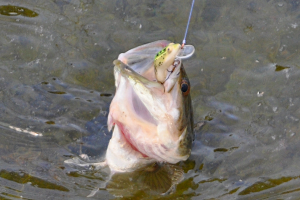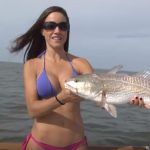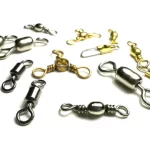Every angler experiences slow days on the water, where no method seems to work. Whether fishing in saltwater off the Florida coast or in the clear freshwater lakes of Michigan, the frustration of getting skunked is universal. Before stowing away the tackle and calling it quits, consider switching up strategies. Creativity often turns an unproductive trip into a successful one. Here are some effective techniques to try when the fish just aren’t biting.
Utilize Live Bait
Live bait fishing remains one of the most effective methods for enticing fish, yet many anglers overlook it in favor of artificial lures. A struggling baitfish triggers a predator’s natural instincts far more than a static lure. Minnows and shiners work well, but options like bluegill can attract species such as largemouth bass, pike, muskie, and bowfin.
Frogs also make excellent bait during the summer. Hooking one through the lips or a leg often results in an immediate strike. However, it’s crucial to check local fishing regulations before using amphibians or game fish like bluegill as bait. Even common options like nightcrawlers and crickets can outperform artificial baits in the right conditions. If bass ignore soft plastics, a Texas-rigged nightcrawler may be the perfect alternative.

Try Grocery Store Baits
A grocery store provides a surprising selection of effective fishing baits, particularly for catfish and carp. Bread, chicken liver, hot dogs, canned corn, and even soap have been proven to work when traditional options fail.
Although these baits are commonly associated with bottom-feeders, they can also attract other species when conditions are tough. Additionally, they offer an affordable alternative to conventional bait, allowing for a full day of fishing at a fraction of the cost of traditional tackle.
Experiment with Retrieve Techniques
Many anglers follow conventional retrieval methods without experimenting. Adjusting retrieve speed or presentation can make a significant difference.
Floating crankbaits, for example, can double as topwater lures by retrieving them just fast enough to create surface disturbance without diving. Buzzbaits, typically burned across the surface, can be slow-rolled like a spinnerbait for a more subtle approach.
Another highly effective technique is using a completely weightless plastic worm. This slow-sinking presentation often tempts fish in shallow water, while the same lure can be worked as a topwater bait over vegetation. Thinking outside the box can result in more bites.
Downsize Lures for More Strikes
Large lures aren’t always necessary to catch big fish. Many large predators will take smaller, easy meals when the opportunity arises.
Small fly-fishing flies, presented behind a clear float, can be highly effective for panfish and even largemouth bass. Panfish poppers have also proven successful in attracting larger fish. Over time, downsizing soft plastics, topwaters, and spinnerbaits has consistently produced more strikes.
In particular, the Rebel Wee Crawfish floating crankbait—only about two inches long—has proven highly effective in lakes and rivers for bass, bluegill, rock bass, and even perch. When others throw large baits, a downsized lure can stand out.
Explore New Fishing Spots
Fishing the same waters repeatedly can lead to diminishing returns. Exploring lesser-known locations often yields better results. Checking Google Maps for river bends or under-fished ponds can uncover hidden honey holes. Small farm ponds, for example, often produce more action than large, high-pressure lakes.
When large bodies of water fail to produce, switching to smaller streams, backwaters, or overlooked public ponds can make all the difference. Many of these locations hold aggressive fish that receive far less angling pressure.
Try Alternative Fishing Methods
Many states and Canadian provinces allow fishing techniques beyond the traditional rod and reel. Trotlines and jug lines, commonly used in Oklahoma and other regions, provide an effective hands-free method for targeting catfish, crappie, and even bass. Some states even maintain separate records for alternative fishing methods, making them an interesting option for those looking to set a record.
For bowhunters, bowfishing offers an exciting way to sharpen shooting skills while targeting invasive species like Asian carp. Meanwhile, adventurous anglers may want to try hand-fishing—commonly known as noodling—for catfish. However, checking local regulations is essential before attempting these methods.
Creativity Leads to Success
When fishing slows down, adapting strategies and thinking outside the box often leads to better results. Whether experimenting with live bait, adjusting retrieval techniques, downsizing lures, or exploring new locations, the key to success lies in flexibility. Fishing is an art, and those willing to get creative will ultimately enjoy more rewarding days on the water.
Image/Source: WOS





